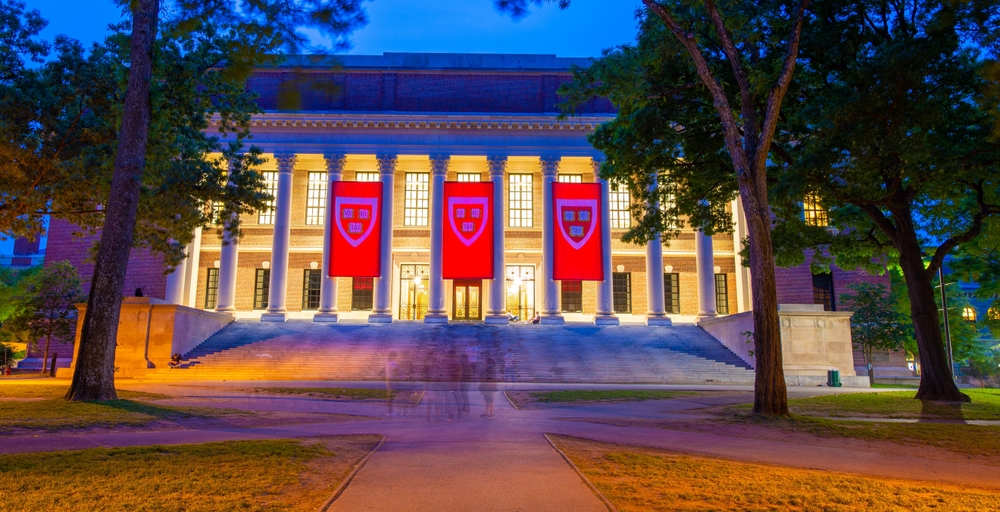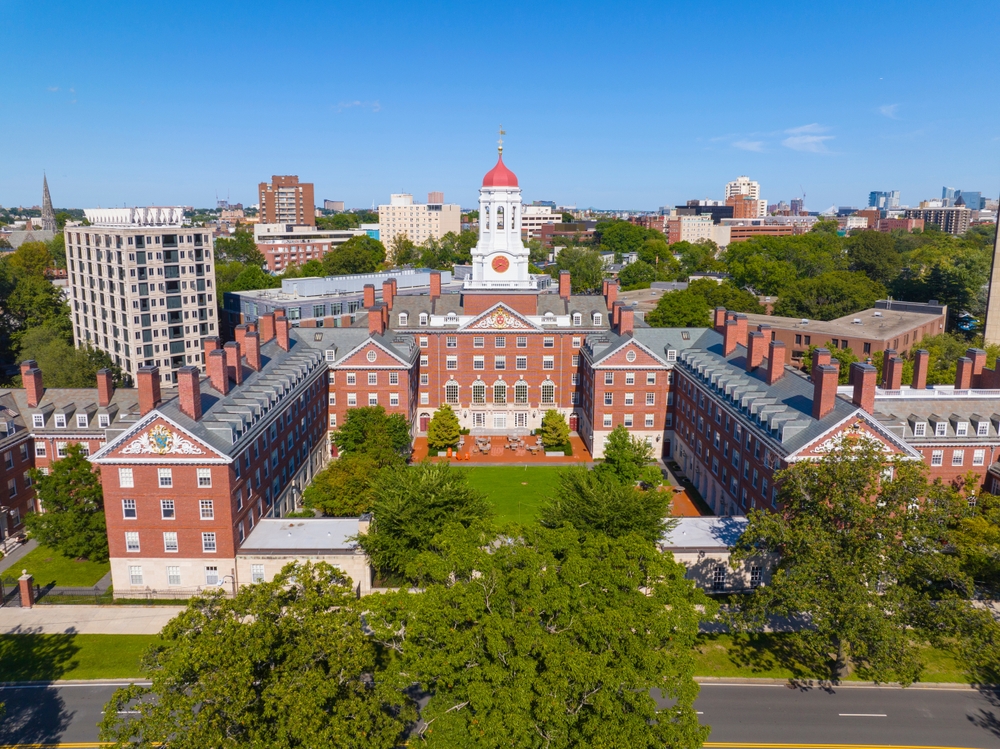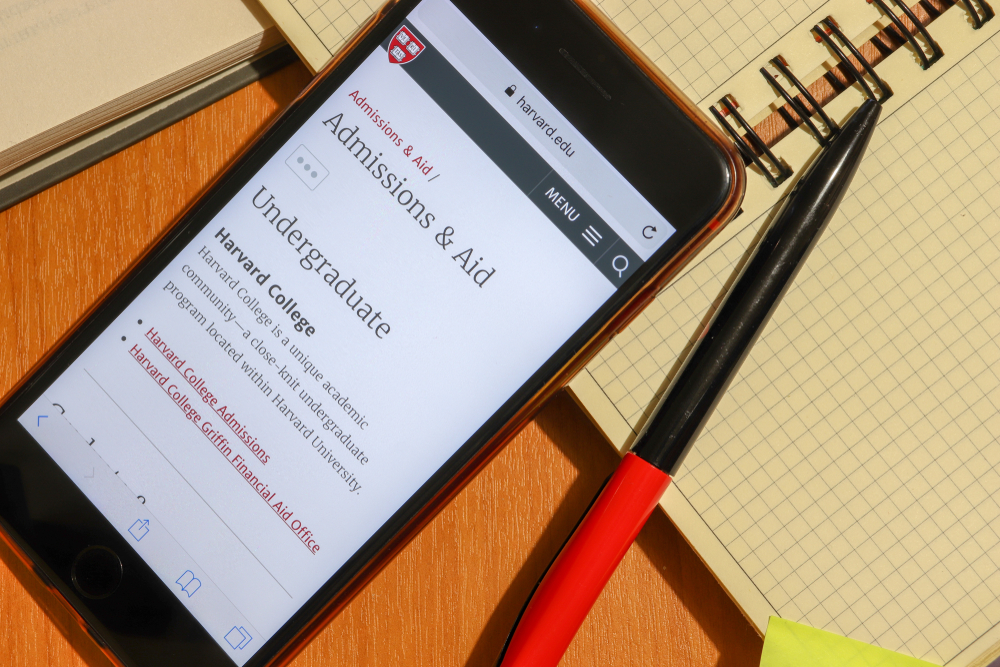Harvard Now Offers Free Tuition and Fully Covers Expenses, Like Housing and Health Insurance, for Students Whose Families Earn Less Than $100,000

Imagine a door that’s been locked for centuries only those with a special key could enter, leaving many standing outside, hoping but unable to step inside. For decades, elite universities like Harvard felt like that door, its key hidden behind a towering wall of tuition and expenses. But what if, suddenly, that door swung wide open—not just for a few, but for the vast majority of families?
Harvard’s bold new financial aid policy is exactly that a transformative unlocking of opportunity. Starting soon, families earning $100,000 or less will see every barrier to attending Harvard tuition, housing, health insurance lifted completely. Even those earning up to $200,000 can attend tuition-free. This shift is not just about numbers; it’s about changing who gets to shape our future.
What does this mean for the young minds stepping through that door? How might it reshape not only one university but the entire landscape of education and equality in America? And, ultimately, what can we learn from this breakthrough about the power of access and the promise of a fairer world?
What Harvard’s New Financial Aid Policy Means
For many, the idea of attending Harvard conjures images of prestige and, often, an intimidating price tag. Tuition, housing, food, insurance the costs quickly add up to tens of thousands of dollars each year. This financial weight has kept countless talented students and families outside those historic gates. But now, Harvard is rewriting the rules.
Starting with the 2025-26 academic year, families earning $100,000 or less will pay nothing for their child’s entire Harvard education. That’s right tuition, room and board, meals, health insurance, travel between home and campus, even winter gear and activity fees. Every billed expense is covered. Beyond that, these students receive two special grants totaling $4,000 to help them settle in and prepare for life after Harvard.
Harvard has announced free tuition for families earning less than $200K/year
— Dexerto (@Dexerto) March 17, 2025
They will provide free housing and health insurance for families earning less than $100K/year pic.twitter.com/91tuL1z9Dv
For families with incomes between $100,000 and $200,000, tuition is completely waived, and financial aid is tailored to cover additional expenses as needed. Even families earning above $200,000 may qualify for aid depending on their circumstances, ensuring that no deserving student is shut out simply because of finances.
This isn’t a one-size-fits-all program. Harvard’s financial aid team works closely with each student and family, understanding unique situations and designing aid packages that meet real needs. Loans are a thing of the past since 2007, all aid has come as grants or work opportunities, meaning students graduate without the heavy burden of debt.
Nearly 86 percent of American families will now find Harvard within their financial reach. This dramatic expansion breaks down walls that once seemed impenetrable, inviting a wider, richer diversity of backgrounds and perspectives to the Harvard community. It’s more than financial aid it’s a bold statement that talent and promise should never be limited by a family’s income.
Harvard’s Evolving Commitment to Financial Aid

Harvard’s new financial aid expansion didn’t happen overnight it’s the latest chapter in a more than two-decade-long journey to make one of the world’s most prestigious educations accessible to talented students regardless of their financial background.
The journey began in 2004 with the launch of the Harvard Financial Aid Initiative (HFAI). At that time, families earning up to $40,000 annually could attend tuition-free, with full coverage of tuition, fees, food, and housing. This program was groundbreaking, setting a new standard for elite universities.
Over the years, Harvard steadily raised the income threshold, reflecting both rising living costs and a commitment to reaching more families. In 2006, it increased to $60,000; by 2023, families earning up to $85,000 qualified for full coverage. Alongside raising income limits, Harvard also eliminated loans from its aid packages in 2007, replacing them entirely with grants and work opportunities ensuring students could graduate without the crushing weight of debt.

The university also modernized its aid calculations by excluding home equity and retirement savings from financial assessments. This shift recognized the real financial realities families face, making aid decisions fairer and more inclusive.
Today’s announcement—making Harvard free for families earning $100,000 or less and tuition-free up to $200,000—is the culmination of this ongoing evolution. It reflects a deepening understanding that the traditional definitions of “affordable” have to expand if higher education is to truly serve society’s best and brightest.
Harvard’s financial aid budget, now at $275 million annually, supports more than half of its undergraduates. Over the past two decades, the university has invested more than $3.6 billion in undergraduate aid a testament to its belief that talent should never be limited by financial means.
The Real Impact on Students and Society

At first glance, the numbers free tuition, covered expenses, millions in aid may seem like just dollars and cents. But behind those figures are real lives transformed, and a powerful shift in the landscape of opportunity.
For students, financial barriers often come with invisible burdens worry over how to pay bills, the stress of juggling part-time jobs, or the fear that debt will shadow their future long after graduation. Harvard’s expanded aid lifts those burdens. It allows students to focus fully on learning, growing, and contributing without the weight of financial strain. Research consistently shows that reducing financial stress improves mental health, academic performance, and overall well-being critical factors for personal growth and success.

Beyond individual students, this policy fuels a more diverse and inclusive campus community. By opening doors wider to middle-income families and others who might have felt excluded, Harvard enriches its classrooms with varied perspectives and experiences. This diversity is not just about fairness it’s essential to fostering the creativity and empathy needed to solve society’s most complex problems.
On a broader scale, Harvard’s move challenges the prevailing narrative that top-tier education is reserved for the wealthy elite. It sends a message that talent, drive, and potential can and should be nurtured regardless of economic background. As student debt in the U.S. surpasses $1.78 trillion, this commitment offers a hopeful path toward reducing financial inequality and leveling the playing field.
This shift also has ripple effects beyond Harvard’s campus walls. It pressures other institutions to rethink their financial aid policies, potentially making high-quality education more accessible across the nation. For society, that means more leaders, innovators, and changemakers from diverse backgrounds ready to contribute their talents and perspectives.
What Harvard’s Move Signals for Higher Education and Inequality

This move comes at a pivotal moment, as colleges and universities across the country grapple with questions of access, affordability, and fairness. With student debt soaring beyond $1.78 trillion nationwide, the barriers to a college degree have never been clearer or more urgent to address. Harvard’s initiative raises the bar for what financial aid can and should look like, putting pressure on other elite schools to follow suit.
Already, institutions like Princeton and Stanford have taken similar steps, but Harvard’s expansion covers an even broader slice of the middle class. This shift may accelerate a trend where affordability is no longer a privilege but an expectation at least at the highest levels of academia.
Beyond the realm of colleges, Harvard’s action reflects and influences the broader struggle against systemic inequality. Education has long been a powerful lever for social mobility, yet rising costs have locked out many promising students. By removing financial barriers, Harvard is actively working to dismantle that barrier, creating a more equitable pipeline to leadership and opportunity.
However, it’s important to recognize that access is just one piece of the puzzle. True equity requires ongoing support, inclusive environments, and opportunities for all students to thrive once they arrive. Harvard’s financial aid expansion is a critical step forward, but it also invites us to think about the broader systems economic, social, and cultural that shape who gets to succeed.
Charting a Course Toward Equity
Harvard’s historic move to make tuition free for families earning under $100,000 and accessible to many more offers more than a financial breakthrough. It invites each of us to reflect deeply on the meaning of access, privilege, and responsibility in shaping a fairer society.
Education is often called the great equalizer. Yet for far too many, it remains a gatekeeper, its key hidden behind economic walls. When Harvard opens its doors wider, it challenges us to ask: What kind of world do we want to live in? One where opportunity is tied to wealth? Or one where talent and potential are nurtured regardless of background?
This shift calls on all of us—students, families, educators, policymakers, and communities to think about how we can support access to quality education for everyone. Whether it’s advocating for policies that expand financial aid, mentoring young people navigating educational pathways, or simply raising awareness about the systemic barriers that exist, we each have a role to play.
Remember, change rarely happens overnight. Harvard’s policy is a powerful step, but it is part of a larger, ongoing journey toward equity and inclusion. Our collective action small or large builds momentum toward a future where education is truly a right, not a privilege.
So, look inward and ask yourself: How can you contribute to this movement? How can you help break down barriers that still stand for so many? Because when more doors open, more lives change, and our communities grow stronger.
The promise of a more just and accessible education isn’t just Harvard’s to fulfill it’s a shared mission. And it begins with each of us.
Loading...

